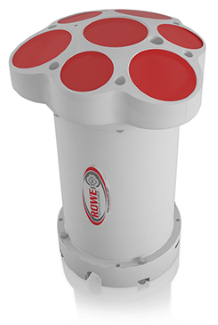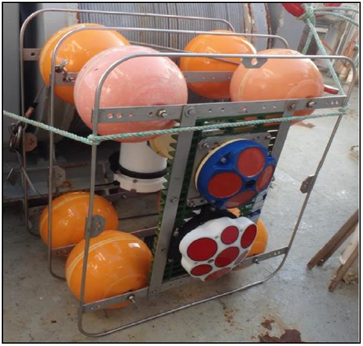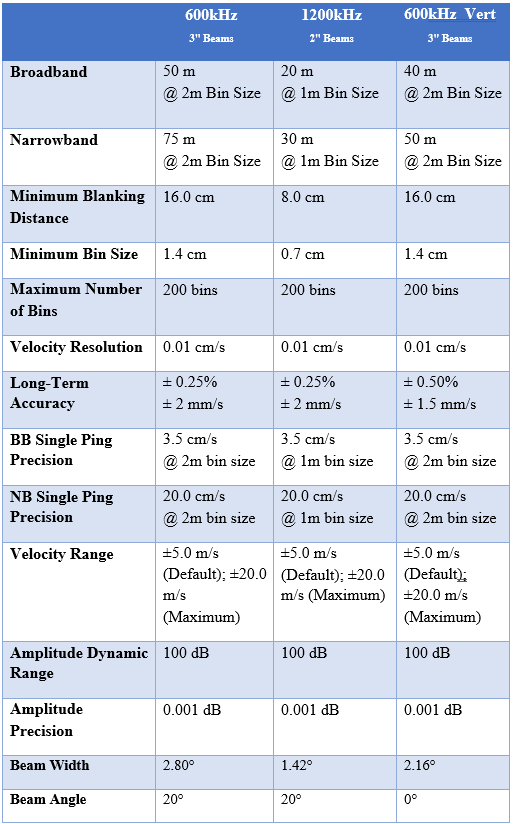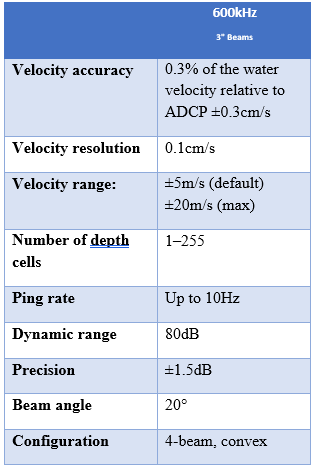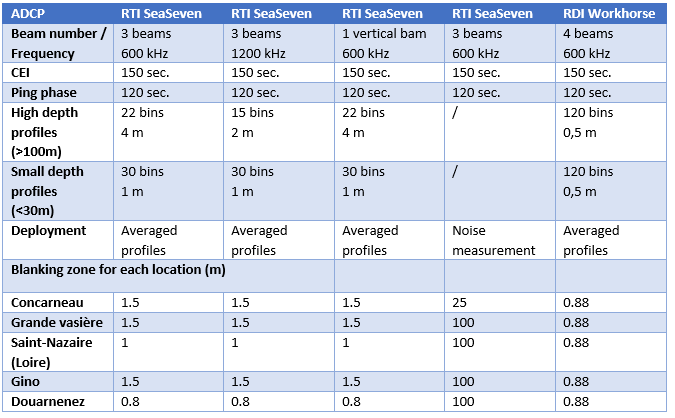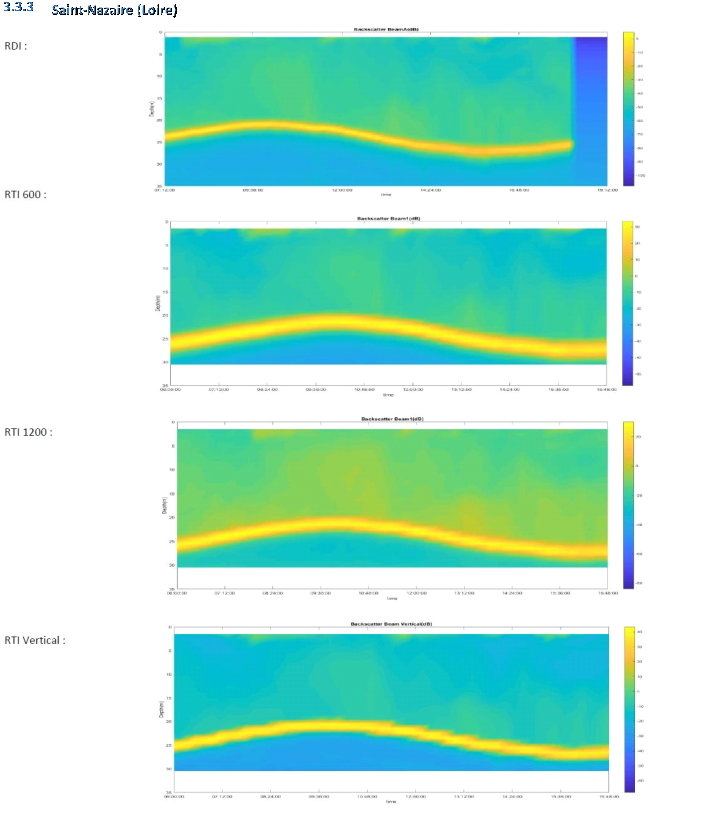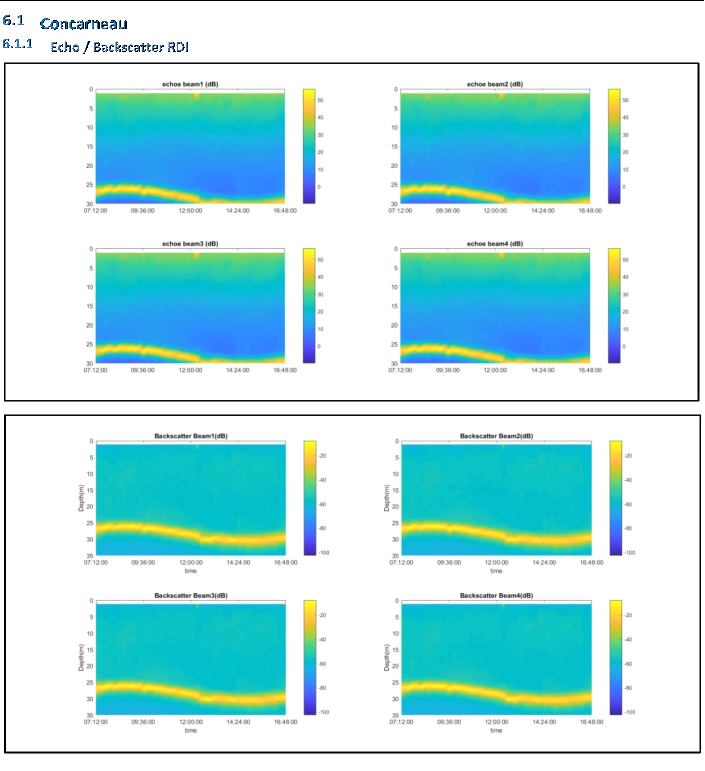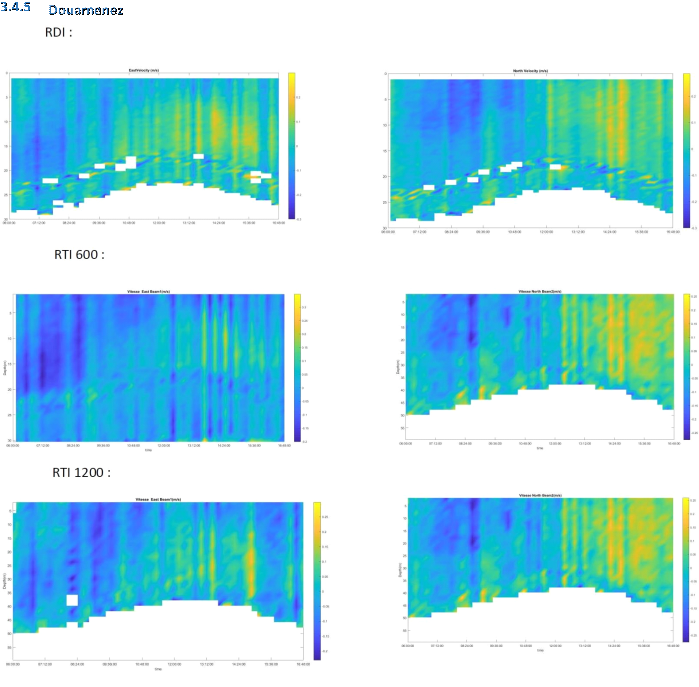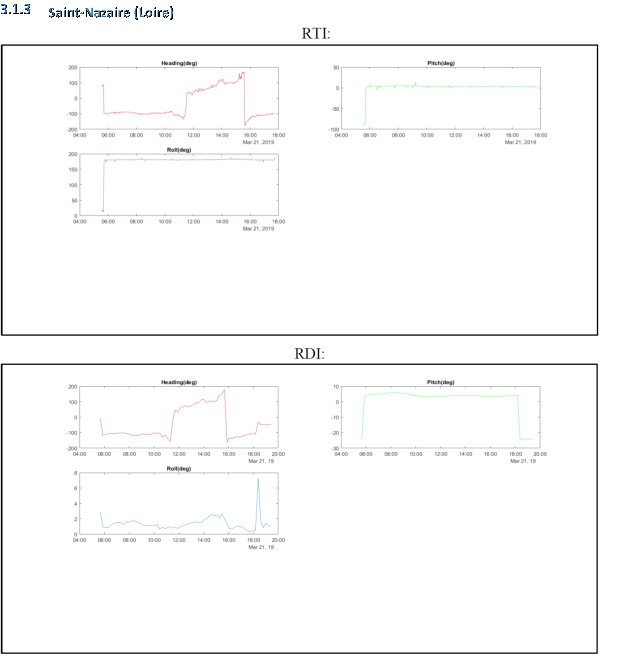May 12, 2020
This report presents the results of the RTI Seaseven dual-frequency ADCP operation in comparison with the RDI’s Workhorse 600kHz during the first phase of the RoeCaille 2019 campaign.
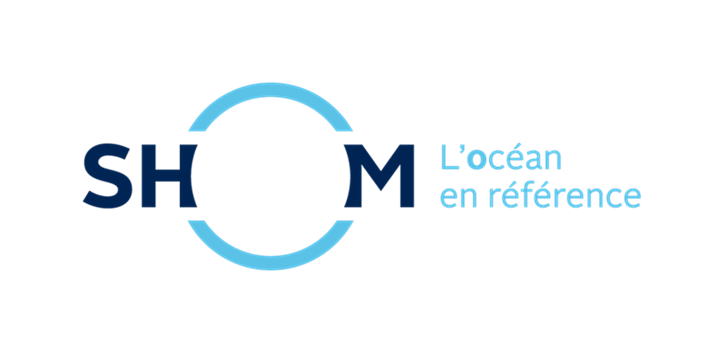
SHOM of Brest, France performed a comparsion of the Teledyne RD Instrument Workhorse 600khz Sentinel and the Rowe Technologies, Inc. SeaSEVEN 600khz/1200khz. The SeaSEVEN is a dual frequency ADCP with a vertical beam. The SeaSEVEN allows the user to perform 2 different measurements at the same time. The 600khz is good for long range measurements. The 1200khz is good for high resolution measurements. The SeaSEVEN or our dual-frequency SeaPROFILER ADCP allow the user to peform both measurements at the same time. The SeaSEVEN includes a vertical beam which can be used a depth sounder or if pointed vertically, it can measure the wave heights, water surface height or ice tracking. The SeaSEVEN is also good for sediment transport or type of measurements because the SeaSEVEN gives 7 different locations of measurements in the water column.
Location
South Brittany
ROeCAILLE campaigns are made in 2 phases of 10 days in South Brittany. The objective is to target 2 periods of spring tide in order to capture maximum variability to facilitate the calibration of the sensors. The first phase is in winter unstratified (march), while the second phase is in stratified summer (August). The planning and sampling strategy are similar on both phases.
Stationnary measurements are realized at 5 different points. Three of these measurements correspond to the location of the SHOM benthic stations. The last measurement is located at the Loire’s estuary which represents one of the major forcings of the sedimentary dynamics of the South Brittany region. Each stationnary measurement lasts 12 hours. Below are the different locations :
- Station 1 – Concarneau 47,80°N / 3,95°O - 47,800°N / 3,915°O.
- Station 2 – Grande-Vasière 47,25°N / 4,40°O - 47,242°N / 4,378°O.
- Station 3 – Saint-Nazaire (Loire) 47,25°N / 2,20°O - 47,149°N / 2,359°O.
- Station 4 – Gino 48,30°N / 5,60°O - 48,285°N / 5,672°O.
- Station 5 – Morgat (Douarnenez) 48,203°N / 4,478°O - 48,204°N / 4,481°O.
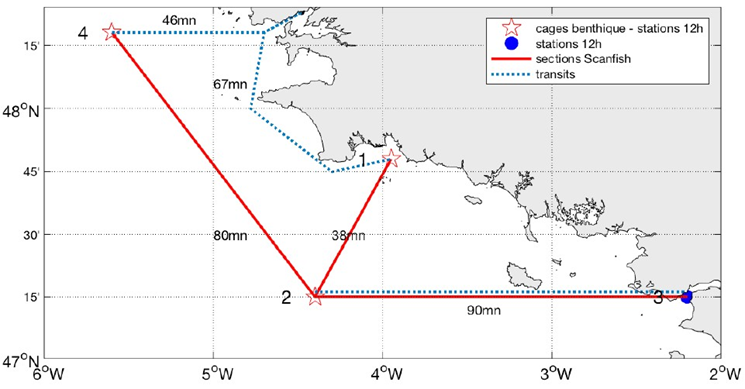
Results
There are a lot of plots and results from this study. This is just a brief summary of the results. You can review the complete results by viewing the PDFs below.
Echo Intensity Results
Concarneau : The RDI treatment removed all raw echoes present, leaving a homogeneous water column with a received echo at -50 dB on average. The RTI 600 keeps occasionnal echoes in the water column with an average of 20 dB. The RTI 1200 removes almost all occasionnal echoes from the water column, with an average echo at -20 dB. The vertical beam is not working so its result is not conclusive, the resulting echo is homogeneous, it presents only a gradient from the surface to the bottom of -70 to -40 dB.
Grande-Vasiere : The column of water after treatment seems rather homogeneous, with only a small visible surface echo on the RDI that may be due to bubbles and some particles up to 15 m depth with an average of -50 dB. The RTI 600 and 1200 have an average of -20 dB. Slight gradient from the surface to the bottom. The vertical beam is homogeneous with a gradient giving values of -90 dB at the surface down to -60 dB near the bottom. Saint-Nazaire (Loire) : Presence of particles in the water column from the bottom, with a punctual surface echo with an average of -40 dB on the RDI. Surface echo more visible on the RTI 600, but weaker in the water column with an average of -10 dB. Average echo higher (at 0 dB) on the RTI 1200. Average at 0 dB on the vertical beam, some echoes on the surface but not very visible.
Gino : Highly visible punctual surface echo up to 5m at -30dB with a weaker echo in these places that extends to the bottom. Between these points, the echo seems weak and homogeneous up to the bottom. The behavior of the two instruments is similar. Douarnenez : Echo close to the surface and close to the bottom, does not seem to be bubbles because we also obtain a deep echo after treatment, with an average value for the RDI of -40dB. Background echo less visible on the RTI, average of -10 dB. Contrast less visible on the 1200. The vertical beam hardly captures the echo contrast.
Water Speed Results
Concarneau : The speeds of all subsystems are between -0.2 and 0.2 m/s. The North element is larger with 0.15 m/s between 9h and 12h on the entire water column, it can be a tidal stream. The average East current is 0.05 m/s. Presence of some extreme values that have been suppressed on the RDI and the RTI 600. The RTI 1200 allows to have a better accuracy for the currents’ speeds in the water column, the strongest currents are barotropes and occur between 10h and 12h. The vertical speeds do not allow to distinguish a specific current, the average speed being at 0.015m/s on both the RDI and the RTI.
Grande-Vasiere : Deep-sea area. No exploitable speeds. Saint-Nazaire (Loire) : Strong East current of more than 1 m/s on the RDI, probably at mid rising tide, ie between 12h and 14h30 and visible on the RTI, going up to 0.8 m/s. The North component displays currents at 0.4m/s maximum between 10h and 13h, stronger at the surface between 8h30 and 11h. They are mostly visible on the RTI. Potential tidal currents are present from 12h to 14h up to 0.4 m/s on the RTI. Regarding vertical speeds, few remarkable speeds, only a barotropic current visible on the RTI 1200 at 0.03 m/s between 10:30 and 11:30. Gino : Deep-sea area. No exploitable speeds.
Douarnenez : An East element is only visible on the RDI and a bit on the RTI 1200, with speeds up to 0.3 m/s on the second half of the measurement. The main and barotropic current is present on the North element, also on the second half of the measurement, up to 0.3 m/s. The vertical beam does not display characteristic speeds.
Overall Results
Positive feedback :
• The data is usable for all stations and comparing with data from the RDI workhorse, it can be seen that the attitude sensors are similar on both instruments. The echo is also similar which makes it possible to work on the dual frequency thanks to a single instrument which reduces the potential sources of error in finding the sizes of the particles present in the water column.• The different beams of the RTI show very similar results and the echo of the RTI makes it possible to distinguish point reflectors in the water column that are not visible on the RDI. (Concarneau station).
• Particle size conversions can identify a tendency, with particles of a size normally in line with the instrument's insonification potential (around 10-3 mm minimum).
Notes :
• The speeds for the deep-sea stations do not reflect the speeds in depth because the wave is not reflected on the bottom, moreover the bottom track is not activated even for the small bottom stations, so we have only raft drift velocities, these speeds are similar on the RDI and the RTI.
• There is an intensity difference of about 30 dB between the RDI and the RTI.



